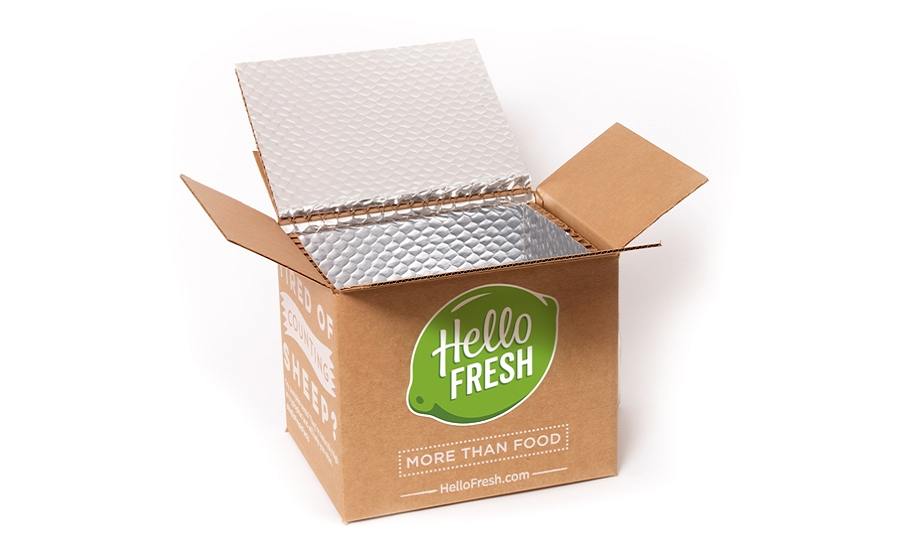Food sales in the ecommerce space are growing as more and more shoppers use grocery delivery programs than ever before. In addition, meal kit subscription boxes are around every corner from Hello Fresh, Purple Carrot, Martha and Marley Spoon, and Blue Apron.
At the PMMI Executive Leadership Conference in March, a Blue Apron representative spoke about the brand, its values, its vision and how packaging plays into its success. Blue Apron is a meal kit delivery subscription that will send meal ingredients to clients on a weekly basis. The company sends everything that one would need to make the meal, including the recipe; all it assumes clients have at home is olive oil and salt and pepper. The company has special packaging to ship everything from one egg, a bunch of spinach, and small jars or bottles for a few teaspoons of soy sauce or mustard.
I was too enticed after his presentation that I had to give it a try. It was so fun receiving my Blue Apron box and unloading the perfectly organized contents. I opened the large box and immediately reached an insulated container that held everything I needed. Each item was individually wrapped or packaged, except for some loose items like potatoes and lemons. At the conference, the topic was brought up of increased waste with ecommerce especially with the use of a large secondary box. I noticed that too; I had the large box, insulated sleeve, two large ice packs and various containers to dispose of (I recycled what I could). But does this format create more or less waste than grocery shopping and using multiple bags, not to mention various packaged items? It may be a wash.
So what about the experience as a whole? The recipes were fun, and delicious, but a bit laborious. But I get the appeal; it was fun and I learned some stuff including what frekkeh is (a grain made from green durum wheat) and that I am capable of perfectly cooking salmon.
Subscription boxes are not going anywhere, nor should they. Yet there is a need for more and different primary and secondary packaging options, including various materials used and functions to make these deliveries more user- and environmentally-friendly.
Check out this article reviewing the various meal delivery kits and see how they each measure up: www.reviews.com/meal-delivery-service



Recent Comments
Custom Boxes
You are right, this is very important before...
You can find many inspiration from Instagram app...
Check out Honista app
Great Article!